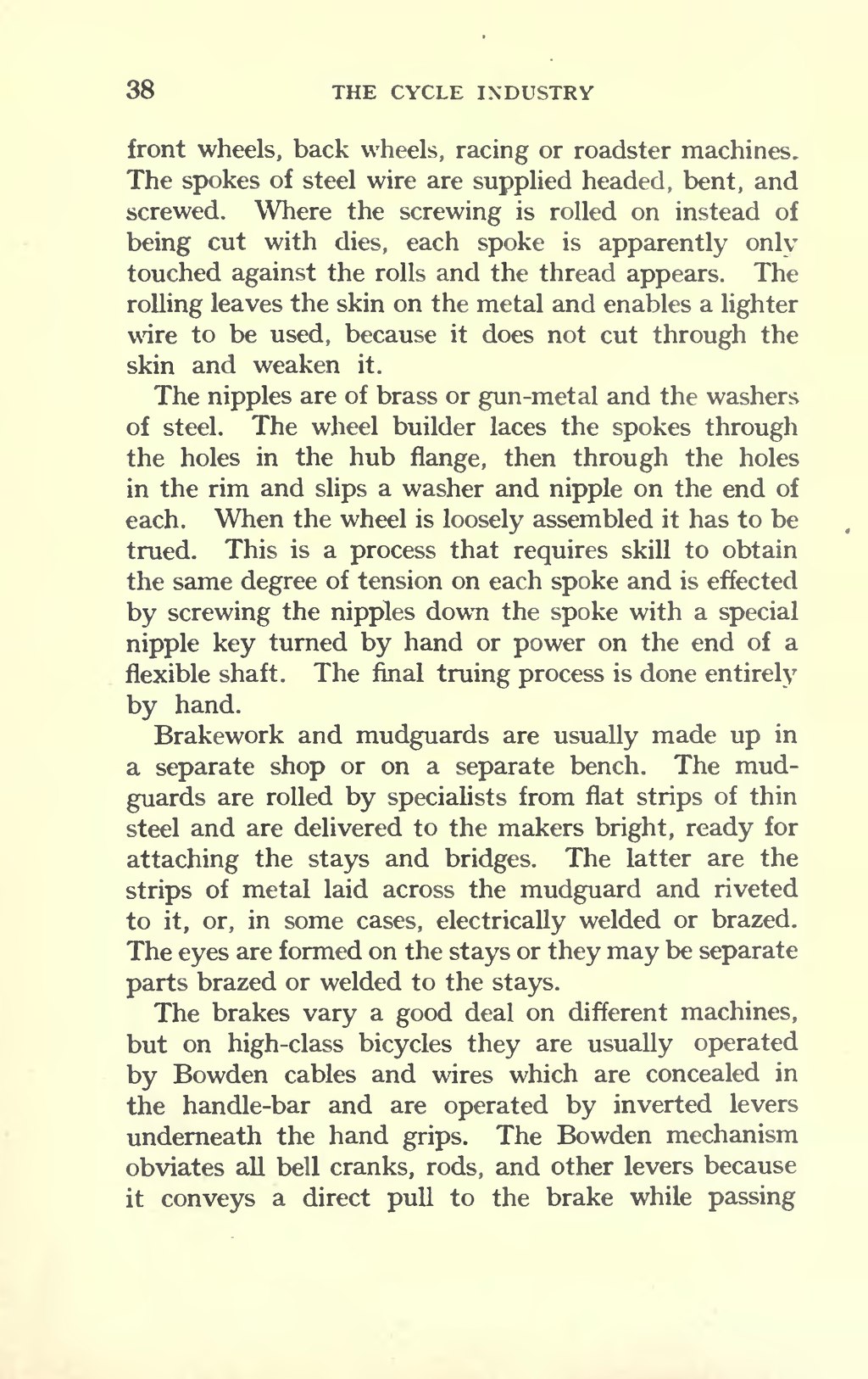front wheels, back wheels, racing or roadster machines. The spokes of steel wire are supplied headed, bent, and screwed. Where the screwing is rolled on instead of being cut with dies, each spoke is apparently only touched against the rolls and the thread appears. The rolling leaves the skin on the metal and enables a lighter wire to be used, because it does not cut through the skin and weaken it.
The nipples are of brass or gun-metal and the washers of steel. The wheel builder laces the spokes through the holes in the hub flange, then through the holes in the rim and slips a washer and nipple on the end of each. When the wheel is loosely assembled it has to be trued. This is a process that requires skill to obtain the same degree of tension on each spoke and is effected by screwing the nipples down the spoke with a special nipple key turned by hand or power on the end of a flexible shaft. The final truing process is done entirely by hand.
Brakework and mudguards are usually made up in a separate shop or on a separate bench. The mud-guards are rolled by specialists from flat strips of thin steel and are delivered to the makers bright, ready for attaching the stays and bridges. The latter are the strips of metal laid across the mudguard and riveted to it, or, in some cases, electrically welded or brazed. The eyes are formed on the stays or they may be separate parts brazed or welded to the stays.
The brakes vary a good deal on different machines, but on high-class bicycles they are usually operated by Bowden cables and wires which are concealed in the handle-bar and are operated by inverted levers underneath the hand grips. The Bowden mechanism obviates all bell cranks, rods, and other levers because it conveys a direct pull to the brake while passing
